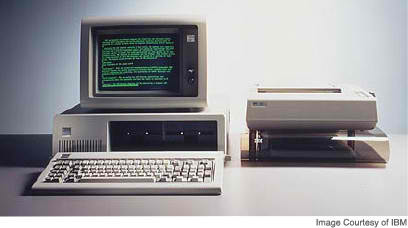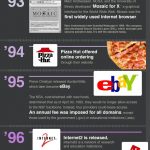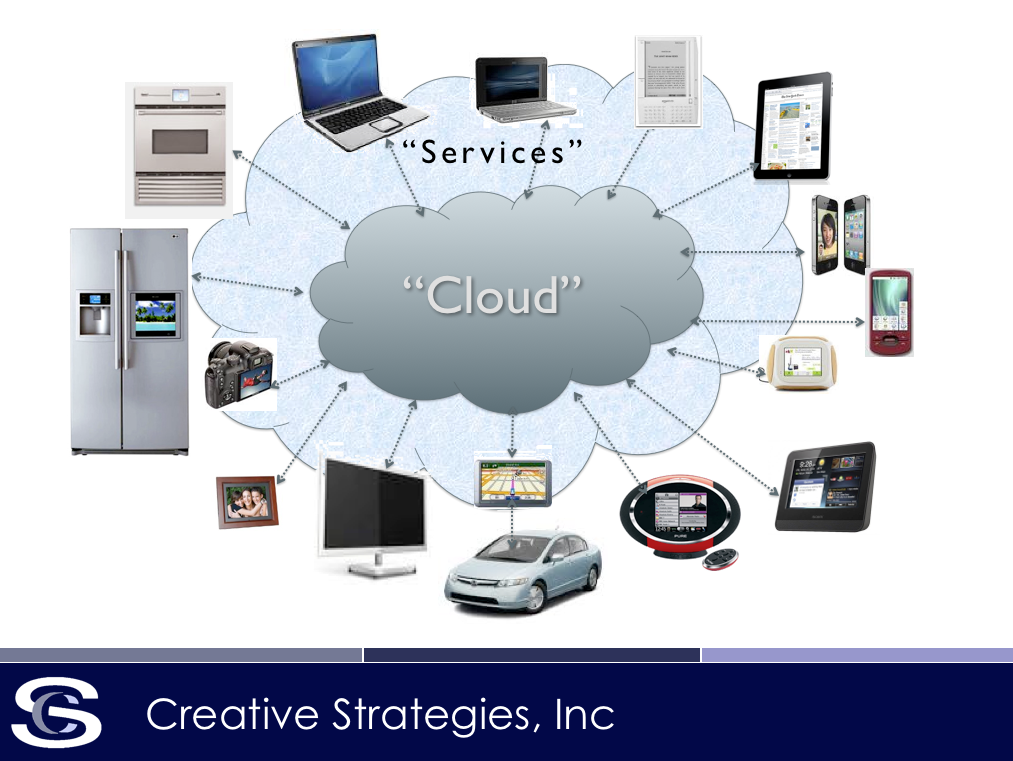As I perused the recent PC shipment numbers from last quarter and saw that they were rather anemic and with relatively slow growth forecast in the future, it became even more evident to me that we are at a major inflection point in our journey with personal computers. We started this journey in the 1950’s with mainframes and then went on to minicomputers. But with both of these technologies, only a limited amount of people had access to them.
But when the PC came on the scene, it democratized the computing experience and made it possible for millions of users to experience the virtues of a computer. At each point in history, as we moved from mainframes-to-mini’s-to PC’s, we have had a major inflection point in which one technology faded from the forefront and the one’s following it took center stage. But even as we moved from one computing design to another, the older technology matured and took a different place in our digital world. Mainframes are now the super computers and backbones of huge enterprises. Minis have transitioned to powerful workstations and clustered servers in a sense. And the PC’s, which cut the cords to mainframes and mini’s to define their existence have become the workhorses within a family’s home, managing their digital movies, photos, finances, etc. At this stage PC’s have matured and settled into a comfortable place where its reason for existence is more and more focused on handling the heavy digital lifting we need from time to time.
Now, even if the PC market is slowing down and is not as robust as in the past, we are still going to sell 350-400 million PC’s every year for some time. They have a place and will continue to be important digital tools in business and the home. However, we are at the next major inflection point and PC’s are about to take a back seat to the newcomers that will define the next major growth phase of computing.
I believe that this inflection point can be described as going from personal computing to personalized computing and will be defined by tablets and smartphones that take all types of shapes, form factors and designs that make the computing experience more personalized and customizable. This inflection point is just as dramatic as when the PC came on the scene and cut the chord between the mainframes and mini’s and brought personal computing local. Another way to think of this is that we are moving into a phase in which people want a PC on their desktop and in their pocket.
But, it goes even deeper if you look at the PC, tablets and smartphones as just another screen in our digital lives. In the future we will have a lot of screens in our lives as well. A screen in our cars with a 3G chip in it so that our cars can be connected to the cloud at all times. Or screens in our refrigerator that is tied to application specific functions related to the kitchen and food. Or a screen built into the mirrors in our bathroom that is tied to the Internet and can deliver custom information on demand as we get ready to head out for the day.
Here is a chart from one of our presentation decks that shows what this might look like. Out in the periphery are a whole host of screens. Next is a layer of services that serve as gateways to things like apps and various services that are then tied to the cloud.

This new inflection point is being led by tablets and smartphones but is bound to carry over to a whole host of others screens people might choose to meet more personalized needs over time.
On the surface, the PC industry and PC companies who have a history as hardware vendors should see this as a new opportunity to extend their PC design and manufacturing prowess to this new extended personalized computing opportunity. But that is not the case. Except for Apple who has made this transition quite smoothly, the rest of the PC vendors are quite challenged when it comes to designing products outside their normal PC expertise. And it is really unclear to me if they ever will be able to extend their experience in PC and laptop expertise to personalized computing.
It gets even more interesting when you realize that hardware is actually only 1/3rd of the equation. In the future of “personalized computing” there is also the apps and services layer and then how all of these work with and react to a cloud based back end. These screens may be smart but they get much smarter when they have apps and are connected to the Internet.
At the moment, most of the Windows PC vendors realize that moving to a tablet/smart phone extension of their business is pretty tough. Indeed, the big guys seem to be putting more energy in the core strength’s, which are enterprise computing and SMB. I don’t think they will give up but I suspect this will be a big struggle for them to create “personalized” computing devices that really add to their bottom line.
This leaves room for potential outsiders to swoop in and become major players if they have the ability to create new “screens” of their own that can be tied to a rich eco system of apps and cloud services. The one that I see on the horizon that fits this description is Amazon. It is widely rumored that they will do a tablet this fall. But it is their back end and services that could make them a major player over night. They have a music store, a video store, an Android apps store and the big kicker-credit cards of over 200 million users. Like Apple, they have spent over a decade building this back end and customer loyalty/commerce engine and would be well positioned to end up being the #2 consumer tablet player almost overnight.
Further Reading: The Amazon Tablet Opportunity Could be Huge
So how will this ultimately impact the traditional PC vendors? My best guess is that they will not be able to compete in the consumer tablet and smartphone market unless they pour billions of dollars into building similar cloud based back ends and services that make their digital screens sing. The only traditional PC vendor who could have a chance at playing in this new personalized computing consumer space is HP if they are willing to make the billions of dollars in investments to build out their own eco system of apps, services and a rich cloud back end that equals Apple and Amazon.
Further Reading:
HP TouchPad Review – 3 Things that Set it Apart
10 Days with the HP Touchpad
Instead, what I believe will happen is that the traditional PC makers could and should make a major push into corporate with tablets and own that space. Yes, Apple is gaining serious ground here, but they don’t have an enterprise sales and service organization that is really needed to support and integrate tablets into an IT department. In the end, I believe they will realize that it will be almost impossible to compete at the consumer level with Apple and Amazon and put more of their energy into enterprise and SMB focused tablets.
The PC market is maturing and mainstream PC vendors are still well positioned to create new and innovative products around PC ‘s and laptops that could still see yearly growth as much as 10% over the next few years. But I am not optimistic about their chances of extending their computing expertise beyond the more traditional PC and laptop form factors and take serious ownership of the digital consumer. That will come from Apple and Amazon and anyone who can build out a complete eco system of hardware, software and services that really meet the needs of the consumers of the future.




 Click here to see the full image.
Click here to see the full image.
